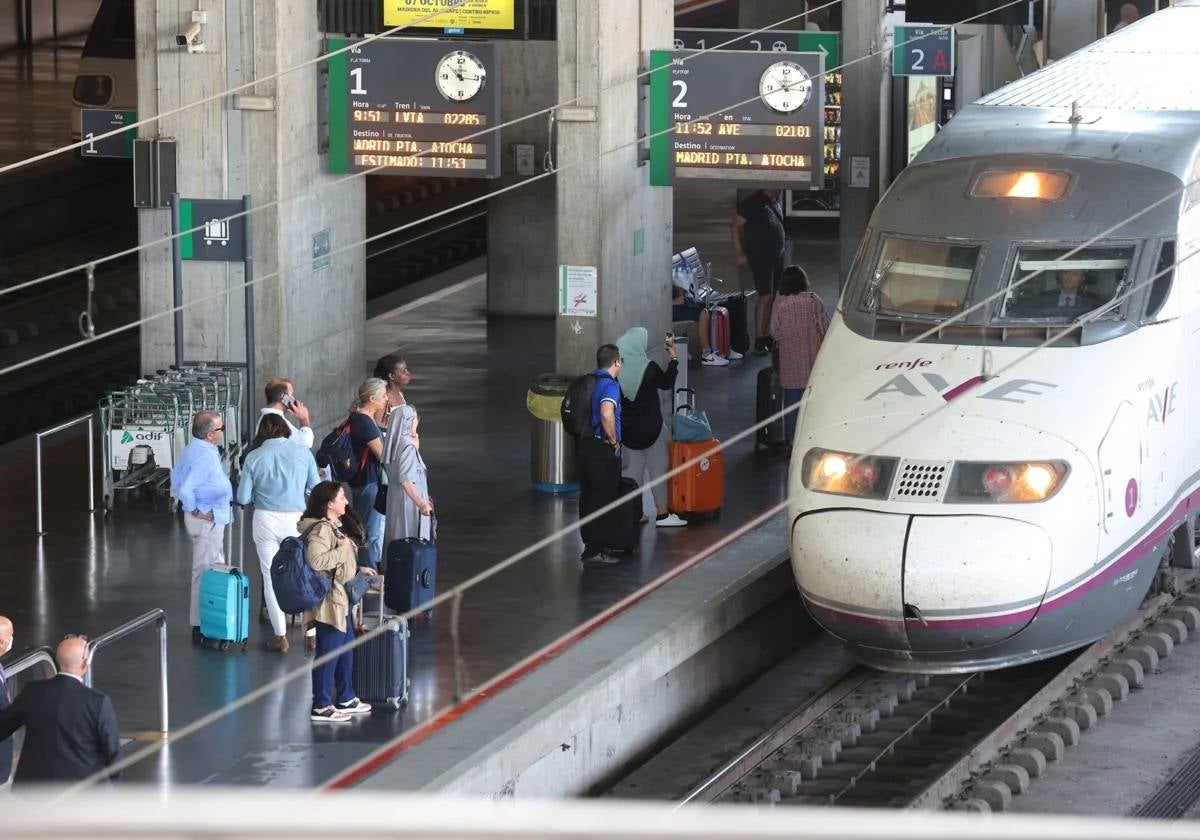Why won't Spain's high-speed trains reach a major city in Andalucía until at least 2050?
State train operator Renfe will roll out AVE service to more provinces (Bilbao, Pamplona, Almeria, Huelva, Burgos, Salamanca, San Sebastián, Vitoria and Soria) over the next six years while this Andalusian provincial capital remains side-lined
Jesús Mejías
Cadiz
Wednesday, 7 May 2025, 19:28
The railway line connecting Madrid with Andalucía suffered another hellish incident last weekend. Still fresh in the memory of the public were the images of some 35,000 passengers stranded in the middle of nowhere on the day of the blackout that affected the whole of Spain and their having to be rescued in the early hours of the morning from over 100 trains. Then, just last Sunday, thousands of passengers again suffered major delays to their train services - and we're talking high-speed trains here.
On behalf of the Spanish government, transport minister Óscar Puente spoke of 'sabotage' on the railway line as there were coordinated thefts of copper cabling in at least four locations in Toledo province, specifically in the municipalities of Los Yébenes and Manzaneque. These thefts affected the signalling system of the Madrid-Seville high-speed line, with significant delays in the service both on Sunday and Monday.
These two incidents in just one week have highlighted the fragility of Spain's railway network, a key factor in mobility for the country. Moreover, it is an uneven mobility across regions. The province of Cadiz persists in its long-standing demand for inclusion in the high-speed rail network, as the lack of a direct connection to Madrid via the AVE high-speed train service perpetuates and increases the province's isolation by rail.
Currently, only 13 provincial capitals in Spain still do not have a high-speed rail connection, but Renfe has plans to introduce the service in Bilbao, Pamplona, Almeria, Huelva, Burgos, Salamanca, San Sebastián, Vitoria and Soria. That leaves only Logroño, Santander, Jaen and Cadiz off the map for Spain's high-speed rail network.
No AVE until 2050
Cadiz province has aspired to have the AVE service come to the provincial capital ever since 1992, which is when the Madrid-Seville line was launched to coincide with the huge Expo trade fair in the regional capital of Andalucía. Although up to 671,000 passengers had taken the Alvia train between Cadiz and Madrid by 2024, to date central government has no plan in place to make this service a reality for Cadiz, which has a population of 800,000 inhabitants if the Bay of Cadiz and Jerez are included. Therefore, we will have to wait at least until 2050.
On a visit to the capital of Cadiz, Óscar Puente himself rejected the arrival of the AVE to the province because, "it is going to cost us a lot of money" and it would be an "ill-thought-out" investment.
The government in Madrid justifies the absence of the AVE for Cadiz on economic grounds, since the cost of the whole operation would be around 3.5 billion euros. Apart from cost, there are also technical difficulties, with sharp curves on the rail tracks that the high-speed train would be on through the Bay of Cadiz, especially in the stretch between Puerto Real and Cadiz city, which would limit the train's speed. The AVE trains need railway lines on which they can reach their optimum speeds of over 200 kilometres per hour, but in Cadiz, in some stretches, their speed would have to be reduced to 50 kilometres per hour.
Unlike other AVE lines in Spain, the section between Cadiz and Seville shares tracks with other train services (Cercanías, Media Distancia and Larga Distancia). In addition, the small section between San Fernando and Cadiz is also served by the metropolitan tramway of the Bay of Cadiz. Lastly, there is a specific, technical impediment. The conventional line linking the provinces of Seville and Cadiz uses Iberian gauge (1.668 mm), whereas the high-speed lines are designed for international gauge (1,435 mm). This means that AVE trains, designed to run on international gauge tracks, cannot run directly on Iberian gauge tracks without adapting the infrastructure, hence the aforementioned high cost of bringing a high-speed rail service to Cadiz.

